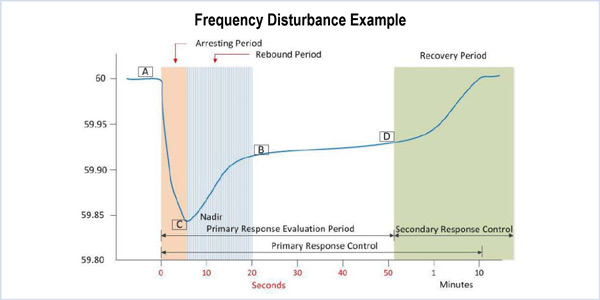Stakeholders Defer Vote on Regulation Revisions
WILMINGTON, Del. — John Horstmann of Dayton Power and Light expressed concern that PJM’s proposed regulation changes will have a “huge impact” on existing Reg D providers and noted that complaints have been filed at FERC opposing the changes PJM implemented in January. (See “New Regulation Rules Improving ACE Control,” PJM Operating Committee Briefs.)
Based on the potential issues, Horstmann made a motion at Thursday’s Markets and Reliability Committee meeting to defer a vote on the package until June, which would allow for the comment period at FERC to close. Members approved the delay in a 3.76 sector-weighted vote.
The package, jointly developed by PJM and the Independent Market Monitor, would replace the benefit factor with the “regulation rate of technical substitution,” and the effective megawatt calculation would be the area under its curve. The mileage ratio from the regulation performance credit would be replaced with the “marginal rate of technical substitution” (MRTS), which will be added to the regulation capacity credit. Bowring said later that PJM meeting rules prevented him from responding to comments from Horstmann that he believed to be inaccurate.
The 24-month transition period will have a minimum MRTS of .65 for the first year, followed by a floor of .5 for the last year. The minimum allowable participation threshold will be raised from 40% to 50%.
“The transition offer by PJM, while a nice gesture, [is] not really compensatory for existing Reg D providers,” Horstmann said.
CCPPSTF Charter Approved
The MRC approved the charter for the Capacity Construct/Public Policy Senior Task Force, declining to adopt language changes proposed by Market Monitor Joe Bowring.
Bowring suggested that one of the group objectives in the charter, which calls for “modifications to [the Reliability Pricing Model] that could accommodate/address both capacity construct objective and state actions,” wasn’t consistent with the charter’s mission to “ensure potential state public policy initiatives and Reliability Pricing Model objectives are not at odds.”
Bowring found no members willing to take up his suggested edits, and the charter passed with one objection and two abstentions.
The task force’s three meetings since its formation in January have revealed deep differences between stakeholders. (See PJM Capacity Task Force Debates the Value of Price Transparency.)
Stakeholders Push Back on Paying for Frequency Response

PJM’s David Schweizer presented a first read of the RTO’s plan to address FERC’s recent Notice of Proposed Rulemaking on frequency response. PJM’s proposal has suggested that it might consider compensating units for maintaining primary frequency response, even though the NOPR is silent on the topic. (See “PJM Wants to Study Frequency Response,” PJM Operating Committee Briefs.)
John Farber of the Delaware Public Service Commission staff took issue. “If we’re purchasing this premium [Capacity Performance product], it should include this primary frequency response,” he said.
He asked that the problem statement and accompanying issue charge include language that the compensation would be considered “if appropriate or necessary.” Schweizer said the documents were developed to allow dialogue on the topic while designing proposed solutions.
He said he will be seeking the Operating Committee’s approval on Wednesday and asked that any proposed changes be submitted as soon as possible.
Manual Changes OK’d
Stakeholders endorsed by acclamation two manual revisions:
- Manual 14B: PJM Region Transmission Planning Process. The changes correcting wording in the baseline thermal analysis section to match analytical procedures and replace all occurrences of “special protection system” with “remedial action scheme” per a change to the NERC glossary of terms.
- Manual 18: PJM Capacity Market. The revisions conform to FERC’s March 21 order tentatively approving PJM’s “enhanced aggregation” plan to allow seasonal capacity participation as CP resources. Stakeholders deferred sunsetting the Seasonal Capacity Resources Senior Task Force until the May meeting so they can be informed of any action on the seasonal capacity filing at FERC. (See PJM Outlines Aggregation Rules for Upcoming Capacity Auction.)
Members Committee
Members Endorse Pricing Revisions
The Members Committee endorsed revisions to PJM’s Tariff and Operating Agreement to address shortage pricing through the operating demand curve. (See “Shortage Rule Takes Effect amid FERC Silence,” PJM Market Implementation Committee Briefs.)
The committee also endorsed changes to Manual 15 regarding fuel-cost policies. (See PJM Fuel-Cost Policy Changes to Take Effect in May.)
Both changes had received substantial discussion in previous meetings, so members had little to say about them Thursday. Bowring reiterated concerns he has mentioned previously about PJM’s approach to handling fuel-cost policies.
– Rory D. Sweeney



